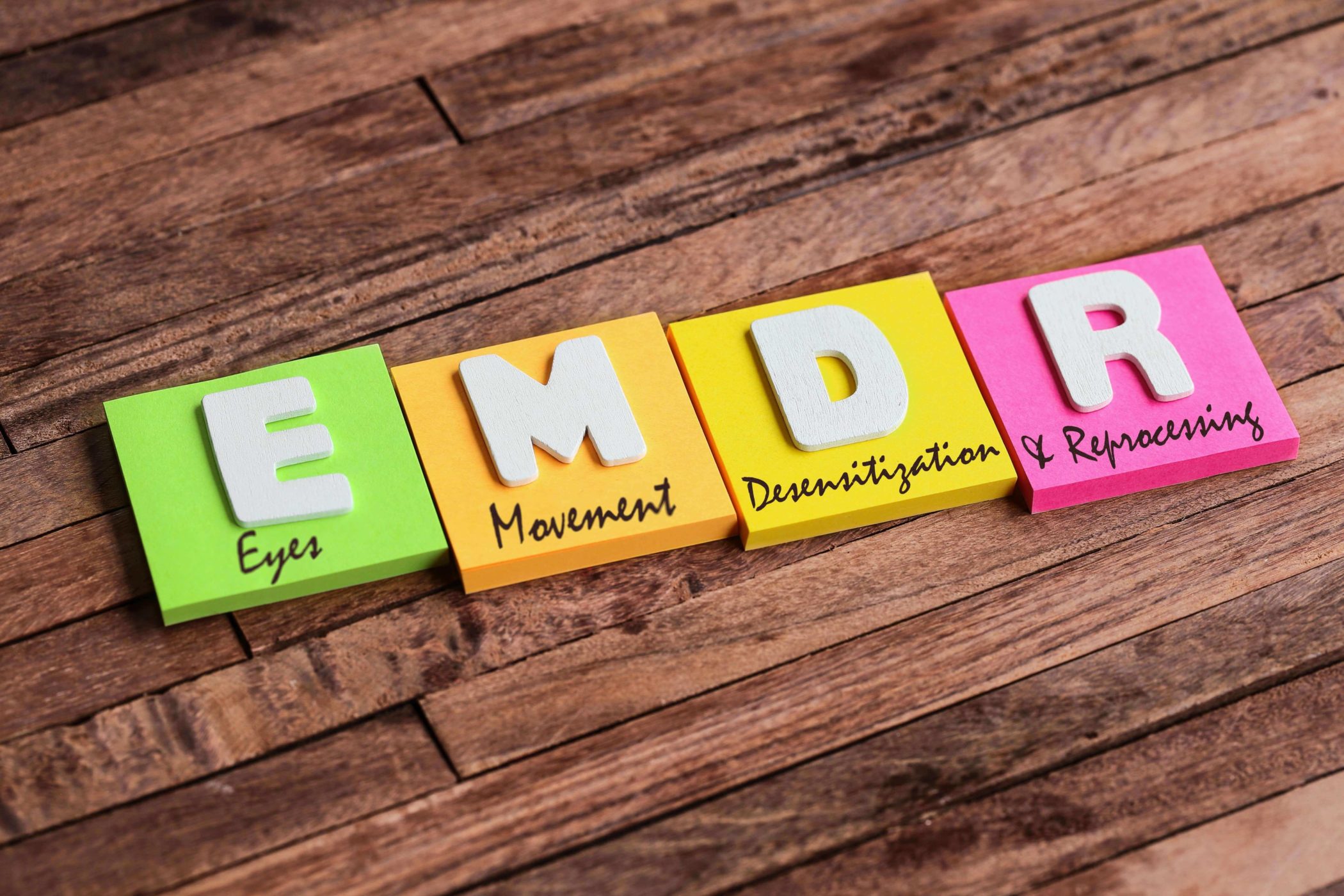Anxiety and depression are significant concerns for too many people. According to the Anxiety & Depression Association of America (ADAA), about 40 million Americans 18 and older have some anxiety disorder, making it the most common mental illness in the country. The National Institute of Mental Health (NIMH) estimated more than 8% of U.S. adults (21 million people) experienced at least one major depressive episode in 2020.
Effective treatment is available, but too many people with anxiety or other mental health concerns do not seek help. Medication-assisted treatment (MAT) is considered one of the best options for treating anxiety and depression. However, a newer treatment — EMDR or Eye Movement Desensitization and Reprocessing — may help some.
What is EMDR
Developed in the late 1980s, EMDR is a nontraditional therapy growing in popularity. It uses bilateral stimulation. These can be side-to-side eye movement or physical stimulation. The physical component can take the form of tapping on the body.
EMDR is being used to help those with post-traumatic stress disorder (PTSD) and other forms of anxiety. Some practitioners have also incorporated it into treatments for people with panic attacks, eating disorders, and substance abuse disorders.
The idea behind the treatment is that eye movements can reduce the hold traumatic memories have on the person. These thoughts are causing the individual problems because they haven’t been properly processed. Once they have been reexamined with the accompanying eye movements, they should diminish.
What to Expect in an EMDR Session
An EMDR treatment lasts as long as 90 minutes. During the session, the therapist will make motions with their hands and fingers in front of the person’s face. The person follows these movements with their eyes. While this is happening, the individual recounts the event that has caused them anxiety or trauma. They must also describe the emotions and sensations they experienced as well. As the session progresses, the person will be asked to shift their thinking to more pleasant thoughts and memories.
The Phases of EMDR
Typically, a single traumatic memory can be processed within one to three sessions. EMDR is structured around eight desensitization phases.
The first phase is when a detailed history of the person’s history is given to help the therapist determine how ready they are for the treatment and to pick the focus for the treatment.
The second phase establishes a relationship between the individual and the therapist. Establishing this therapeutic relationship helps to set expectations. It also gives the therapist a chance to teach the person how to maintain any stability achieved until the next session.
During the third phase, the therapist and the person jointly discuss and determine the memory to target during that session. Next, both evaluate the traumatic event to change the associations linked to it.
The fifth phase is known as the installation phase. It is when the work of replacing negative thoughts with positive ones occurs. After this phase, the individual conducts a body scan in the sixth phase. The scan determines if residual tensions connected to the traumatic event remain in the body.
Closure is the seventh phase. During the second phase, the therapist will have taught the person specific techniques to help them stabilize between treatments. These self-control measures will help achieve equilibrium between sessions for the individual. These will be called upon at this point.
The eighth and final phase is a reevaluation of what happened during the session. The therapist and the person discuss what was achieved. They will also determine what the focus needs to shift to during future sessions.
Is EMDR Effective?
To date, more than 20,000 therapists have been trained to use EMDR with their patients since the technique was introduced in 1989. Research conducted around EMDR has shown that it can provide benefits; however, some skepticism remains about how effective this newer form of therapy is. Much of the criticism comes from the fact that studies of EMDR have been small.
Several major medical groups have noted that EMDR can be an effective treatment, particularly for PTSD. These include the American Psychiatric Association (APA), the Department of Veterans Affairs, and the Department of Defense.
What has been proven is that EMDR does not harm people, and it’s more effective than no treatment at all. It also appears to be as effective as supportive listening. While supportive listening — when a therapist listens to a patient’s problems without active intervention — can offer a positive effect, it appears that EMDR’s result is equal.
The studies that have been conducted indicate that behavior and cognitive-behavior therapies remain more effective than EMDR. The takeaway is that EMDR may be helpful for some dealing with PTSD, anxiety, or depression. It has not been proven to be fully effective in resolving these mental health concerns, but it will not make them worse.
Bridges of Hope’s treatment philosophy is based on a comprehensive and integrated approach to addressing all issues related to substance use and mental health disorders. Utilizing therapeutically proven, evidence-based clinical practices, Bridges of Hope provides superior patient care in Indiana through its all-inclusive treatment services.


 Verify Insurance
Verify Insurance
 Toll Free Call
Toll Free Call